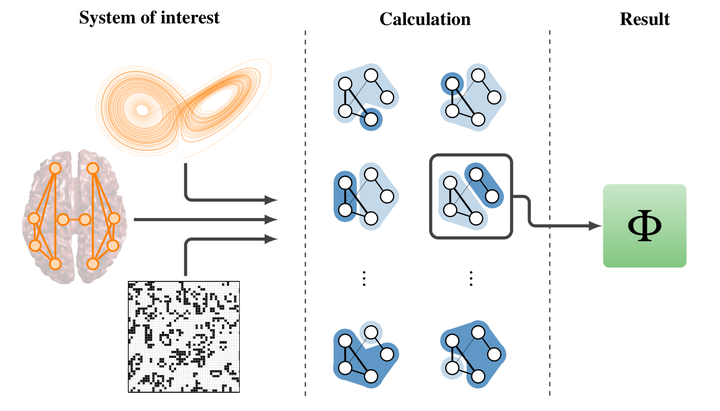Integrated information as a common signature of dynamical and information-processing complexity

Abstract
The apparent dichotomy between information-processing and dynamical approaches to complexity science forces researchers to choose between two diverging sets of tools and explanations, creating conflict and often hindering scientific progress. Nonetheless, given the shared theoretical goals between both approaches, it is reasonable to conjecture the existence of underlying common signatures that capture interesting behaviour in both dynamical and information-processing systems. Here we argue that a pragmatic use of Integrated Information Theory (IIT), originally conceived in theoretical neuroscience, can provide a potential unifying framework to study complexity in general multivariate systems. Furthermore, by leveraging metrics put forward by the integrated information decomposition (ΦID) framework, our results reveal that integrated information can effectively capture surprisingly heterogeneous signatures of complexity — including metastability and criticality in networks of coupled oscillators as well as distributed computation and emergent stable particles in cellular automata — without relying on idiosyncratic, ad-hoc criteria. These results show how an agnostic use of IIT can provide important steps towards bridging the gap between informational and dynamical approaches to complex systems.